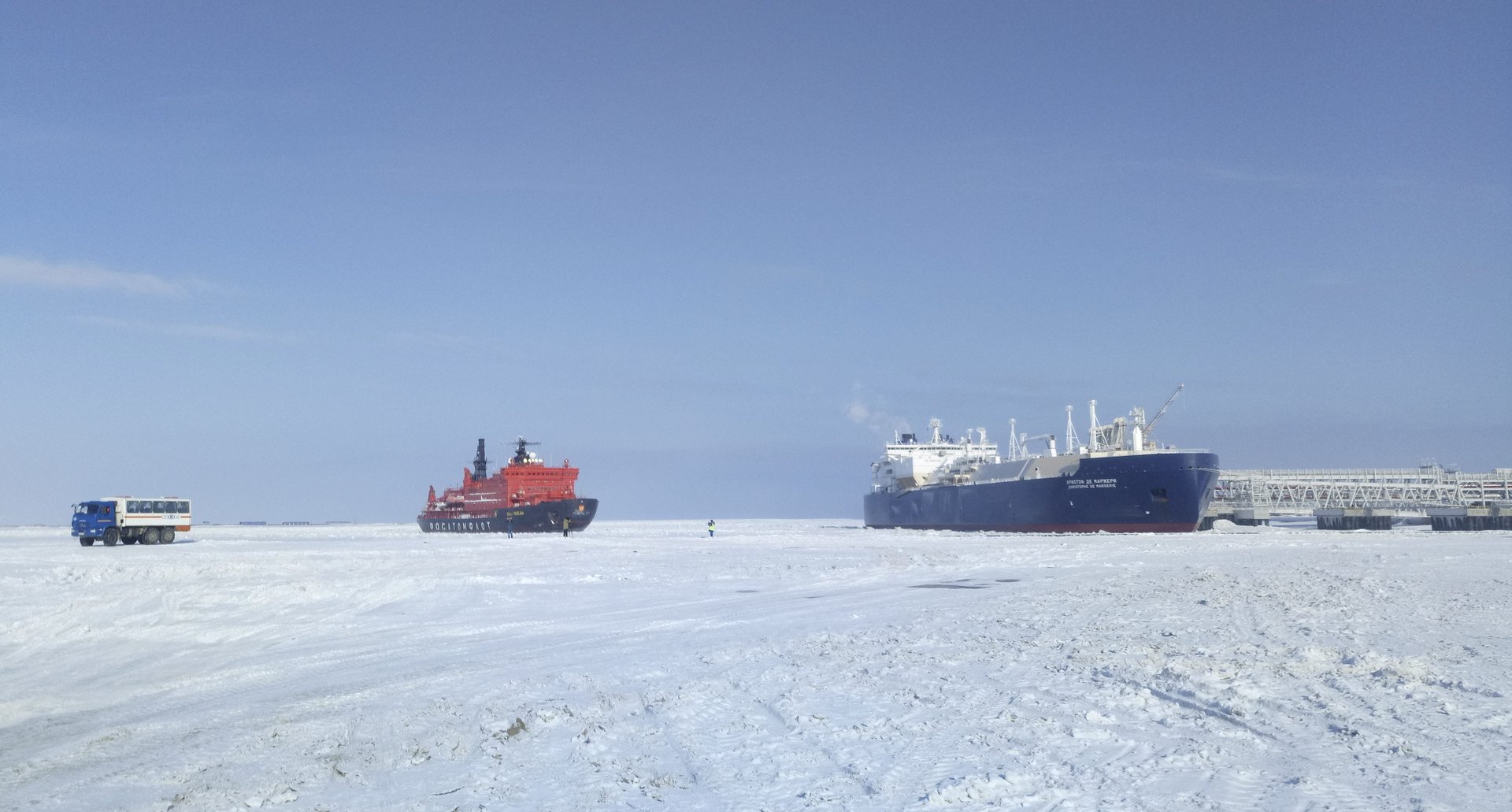A brutal new climate feedback loop is brewing in the Arctic
The Northeast Passage is a sea route that squeezes between Russia and the North Pole, down past Alaska, and on to China. For most of the year, it’s socked in with treacherous ice, forcing traders who wish to move goods from northern Europe to Asia to pass through the Suez Canal and around India, adding about two weeks and 2,400 nautical miles to the journey.


The Northeast Passage is a sea route that squeezes between Russia and the North Pole, down past Alaska, and on to China. For most of the year, it’s socked in with treacherous ice, forcing traders who wish to move goods from northern Europe to Asia to pass through the Suez Canal and around India, adding about two weeks and 2,400 nautical miles to the journey.
Thanks to climate change, though, traffic along the route is heating up—especially traffic in a product that could itself accelerate Arctic ice melt.
The Arctic is the fastest-warming place on Earth. Between the 1980s and 2010s, days when sea ice covered less than half of the Northeast Passage rose from 84 per year on average, to nearly 150, making the route more viable for ship traffic. A Chinese vessel made the first non-stop voyage through the passage in 2015. Since then, vessels have made thousands of trips, including a record of 2,700 journeys in 2019.
This week, the passage iced over for the winter after remaining open for a record 112 days. But not before hosting another record: an all-time monthly high of Russian exports of liquefied natural gas through the passage to ports in Asia.
Natural gas is in increasing demand these days as the global electricity system moves away from dirtier coal. That’s especially true in Asia, and gas-rich countries like Qatar, Russia, and the US are eagerly competing to dominate the liquified natural gas export market, which could be the world’s last great fossil fuel gold rush. China in particular is a key customer. The country’s recently-announced ambitious climate goals are expected to double its gas consumption in the next 15 years.
Most of China’s gas comes via pipelines from other Asian countries and southern Russia. But the Arctic, which geologists estimate to hold one-fifth of the world’s untapped oil and gas, could upend the global market if it continues to become more accessible (and thus, lower-cost to exploit) through the Northeast Passage.
For Russia, the opening of the passage is more flexible than a pipeline, allowing the country to supply multiple customers in different ports—in particular, forging cheaper transit between vast gas reserves in western Russia and ports in China, presenting an opportunity to beat its competitors to Asian markets.
An ice-free passage was a prerequisite for the country’s Yamal LNG Terminal, which opened in 2017 and nearly tripled the country’s LNG export capacity. It’s located on a vast natural gas reserve on the Yamal Peninsula, in Russia’s northwest, much too far from China for a pipeline. In a 2018 paper, German energy economists called the ice-free passage a “game-changer” for Russia, because the Yamal Terminal would allow the country to directly challenge US ambitions in the Asian gas market. Sure enough, in September, the terminal shipped 700,000 tons of LNG to Asia, its biggest month yet.
Meanwhile, America’s competitiveness as an LNG exporter to Asia is unclear. In July, the Trump administration approved a proposal for the country’s first west coast export terminal, in Oregon. But that project has been held up by local officials over concerns about its implications for the climate. With Joe Biden as president, the Arctic-fossil fuel feedback loop—warming leads to drilling leads to warming—will likely be high on his climate agenda.